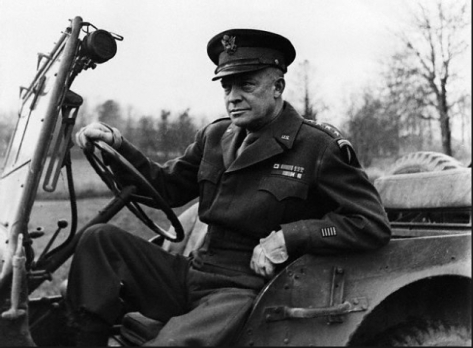There are parts of the resuscitation with no algorithm. No protocol. How do we improve that part? What are the social resuscitation skills we need to work on? We’re very pleased to have Dr Ruth Parsell chip in with some thoughts. Ruth is a current ACEM Registrar working on the CareFlight Rapid Response Helicopter in Sydney. She joined the NSW Ambulance Service in 1998 and has worked in prehospital and hospital settings in varying roles since that time.
The “social” resuscitation is a term I’ve been using for quite some time now. I apply it in dire situations. In both adults and children. But this is about the paediatric resuscitation and, specifically, cases where the prognosis is highly likely to be tragic. It is in these cases that I utilize this term because we are clearly treating more than just the patient when we resuscitate. I use the term because when I treat the child I am treating their family and all of the social connections that are linked to such a brief, precious life.
Experience We Don’t Always Want to Gain
The sad reality is that every paediatric resuscitation we do offers an opportunity to improve more than just our clinical skills. We all wish we didn’t see these cases but if they continue to occur then we will continue to do our best to serve the needs of both the patients and their families. What if we were able to improve the way we serve them? Which part of the resuscitation we call “futile” is the opposite of futile?
The best way to do both would be to have the “miracle” recovery. The “against all odds”, the “everything was against them”… the full recovery of a child who has had a terrible insult. The drowning, the fall, the pedestrian, the horse riding accident… all the terrible insults we see and all those mechanisms of injury that can potentially cause an early cardiac arrest or a moribund child.
Instantly we think of our algorithms, our protocols, our list of reversible causes and the sequence of steps we might take when we arrive at the scene. We hear the age, we think about weights, sizes, drug calculations. None of this should ever change and I’m not suggesting it should.
But what about when we hit that turning point?
It may have been an inkling early on. The thought that the mechanism is just too great, the injury just too severe, a poor response to even the most efficiently and expertly performed algorithm. It’s a moment where, sometimes even without verbalizing, the whole team is aware of the magnitude of the odds against this little one.
The Pause
What if in these cases we took a moment? Just a brief moment. When it comes to adult resuscitations I find we seem to automatically provide explanations to the family even while we are working. To explain that his heart is not beating and that we are working very hard to restart it; with a breathing tube, trying to stop the bleeding and with powerful medicines.
Perhaps it feels automatic because we just see more of those cases. We get to drill those algorithms more so there is a window that gives us space to look around.
So how do we provide this window in those paediatric prehospital jobs?
What if it was just a kiss before the transport? What if the family could have a little more from us? What if we suggested getting their daughter’s favourite teddy or blanket from the house? Just to fill their arms for the trip to hospital, to stop Mum’s hands from relentlessly wringing or something to give her tears a soft landing when they fall.
What do the books say?
The evidence for family presence during resuscitation has evolved over many years. Factors examined include the resuscitation team performance, stress levels amongst staff, clinical outcomes and psychological outcomes for family members. The evidence in paediatrics, including in some randomized control trials, demonstrates that there are improved measures of coping and positive emotional outcomes among families (1). These outcomes are achieved without impeding team performance.
There are many barriers to family presence in the pre-hospital arena. These scenes can be highly distressing, emotions are raw and the procedures required are time critical. Transport logistics can be a huge barrier too. It is rarely practical for a family member to travel with a child to hospital when they are critically unwell or in cardiac arrest. The confined environment of the back of an ambulance is usually congested and the potential unpredictability of a relative may compromise staff safety. The evidence regarding family presence is also more difficult to obtain.
However, there is some evidence regarding family presence during pre-hospital CPR in the adult literature and this also confirms positive results on psychological variables in family members without interfering with medical efforts, either clinically or with regards to health carer stress.(2)
When I have used the term “social” resuscitation in the past, I used it primarily in the dire situations I mentioned previously. Traumatic cardiac arrest in children fits this description, with a less than 5% neurologically intact survival rate (3).
I use this term in cases where I feel the resuscitation efforts are more a resuscitation for a family than the patient. I use it in the context of transporting to an appropriate place, where I feel that the optimal ongoing social supports for family members can be best met. Somewhere where others can assist with tissues, quiet rooms and hushed explanations. Somewhere where others can understand the welled up look that we give them when we enter the bay.
Now I think that the social resuscitation needs to start earlier. A more conscious and deliberate effort. Maybe not every time. Not when you can feel yourself buckling under the cognitive load. Not when your emotions are so close to the surface you can’t get the words out. Not when the scene is like a powder keg and you might just be putting people at risk.

But in those paediatrics cases we need to make a conscious effort to find a window, even where the algorithm is crowding us a little more. That might be the part of the resuscitation that isn’t futile for those left behind.
Try the explanation. Try the kiss. Wait for that teddy. Just try it and let’s see if it improves our social resuscitations. It might even just improve things for all of us.
Notes and References:
- ANZCOR Guideline 10.6 Family Presence During Resuscitation, August 2016.
- Jabre et al. Family Presence During Cardiopulmonary Resuscitation. NEJM. 2013;368:1008-18.
- Fallat et al. American Academy of Pediatrics. Policy Statement: Withholding or Termination of Resuscitation in Pediatric Out-of-Hospital Traumatic Cardiopulmonary Arrest. Pediatrics. 2014;133.
That image is shared unchanged from the post by Gabrielle Diwald at unsplash.com under Creative Commons.

